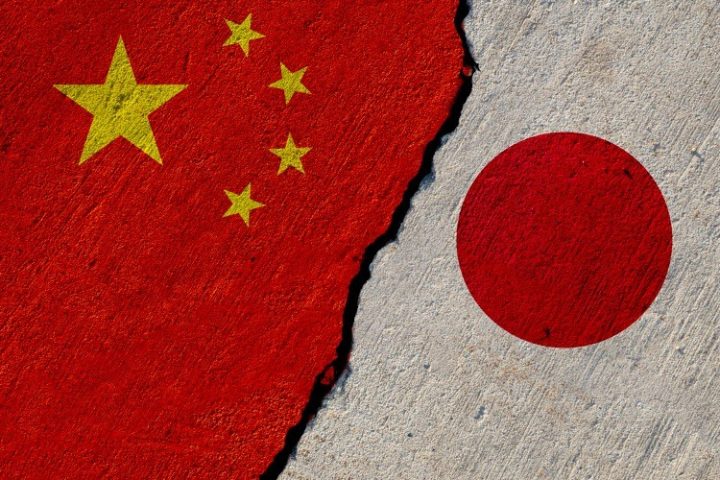
SINGAPORE — Japan’s new national security policy has labeled China as an “unprecedented strategic challenge,” replacing a direction that emphasized possible cooperation, a Bloomberg source said.
The new strategy highlights plans for Japan to procure longer-range missiles, including building its own hypersonic weapons, as part of a major overhaul of its defense capabilities.
Such a radical shift in defense policy was prompted by the Ukraine-Russia crisis, tensions over Taiwan that entailed Chinese missiles landing in waters near Japanese islands, as well as an increasingly provocative North Korea.
“Japan was trying not to antagonize China in the past,” said Professor Rumi Aoyama of Waseda University in Tokyo. “Now the language is catching up with reality.” Japan has also become more vocal about its interest in protecting Taiwan.
Yet Japan had to be sensitive in matters pertaining to security concerns posed by its largest trading partner, China, while it has used the word “threat” in defense ministry documents to portray North Korea.
Alluding to a “remarkable” accumulation of missile capability in the region, the government indicated that it is becoming challenging to cope with the situation simply by reinforcing Japan’s current missile-defense network.
The revisions to three documents governing Japan’s security and defense strategy call for developing “counter-strike capability” that would empower it to target an enemy’s military facilities, in a milestone for a country bound by a pacifist constitution since 1947.
Japan plans to purchase Lockheed Martin’s Tomahawk missiles for that purpose, based on the documents. The missile has a range exceeding 1,250km (776 miles), meaning it could be targeted at naval bases on the east coasts of China and Russia.
Besides, Japan plans to obtain adequate supplies of missiles, including domestically made ones, over the next 10 years with ranges long enough to target military assets in North Korea, China, and Russia.
In light of this new strategy, the Japanese government is considering amending the defense guidelines governing its military collaboration with its only formal treaty ally, the United States, according to Kyodo News, quoting government sources.
Prime Minister Kishida may broach the issue during a visit to the United States that the government is seeking to schedule for January, the agency said.
Japan will maintain its “exclusively defensive” posture, as well as its prohibition of nuclear weapons, the documents assured.
However, China expressed to Japan its objections to the wording in the new documents, saying Beijing was committed to maintaining peace and stability.
“The Japanese side ignores facts,” Chinese Foreign Ministry spokesperson Wang Wenbin told a Wednesday news conference. “Hyping up the ‘China threat’ to find an excuse for its military build-up is doomed to fail.”
Kishida has declared plans to raise defense spending by about 60 percent to 43 trillion yen ($314 billion) over the next five years. After discussions on how to fund the move, his ruling Liberal Democratic Party is set to agree on a plan to increase taxes, Kyodo News said, but will avoid scheduling a date for a policy that is probably unpalatable with the public.
Rules directing the transfer of defense equipment will also be evaluated under the strategy, as Japan unveiled a three-country project with Britain and Italy to develop a next-generation stealth fighter jet and sought to boost its domestic defense industry.
The relationship between Japan and China is a complicated one. For starters, Japanese aid and investment helped China modernize, and the growing Chinese market contributed to Japan’s growth. In 2021, China was Japan’s biggest trading partner, and Japan was China’s second-largest: Bilateral trade reached a 10-year record of US$391 billion. Nonetheless, historical and territorial disputes continue to mar bilateral relations, mainly over the status of the Senkaku/Diaoyu islands, and of Taiwan, as well as historical memories of Japan’s wartime aggression. Under Chinese President Xi Jinping, who is commonly touted to be a nationalistic leader, Sino-Japanese ties have further plummeted.
Both countries view the other as rivals. Nearly 90 percent of Japanese have a negative view of China; more than 60 percent of Chinese feel the same way about Japan. By halting people-to-people interactions, China’s zero-Covid policies have rubbed salt into the wound. The 50th anniversary of the normalization of Sino-Japanese relations on September 29 garnered little hype into either country. Even Kishida and Xi were not on speaking terms at the time.
A recent series of diplomatic efforts have been undertaken to rein in mutual suspicions. For instance, Japan’s national security advisor Takeo Akiba met his Chinese counterpart, Yang Jiechi, in August for seven hours of talks. This meeting led to a short meeting between Kishida and Xi on the sidelines of the Asia-Pacific Economic Cooperation summit on November 17. The Kishida-Xi meeting was their first conversation, excluding a courtesy phone call after Kishida assumed power in October 2021. An official photograph depicted the leaders seemingly wearing contrived smiles and shaking hands.
That being said, the main new reason for bilateral tensions have been recent Chinese pugilism in the area around Taiwan. Five Chinese missiles fell into Japan’s exclusive economic zone during the military activities sponsored by China in response to the Taiwanese visit of Nancy Pelosi, the speaker of America’s House of Representatives. Days after Kishida and Xi met, heavily armed Chinese Coast Guard vessels entered Japanese territorial waters near the Senkaku/Diaoyu islands.
Japan, in turn, is taking major steps to enhance its armed forces. Earlier in December, Kishida pledged to raise defense spending up to two percent of gross domestic product within five years. Economically, more than half of Japanese companies say they hope to reduce reliance on China in their supply chains as concerns about a possible conflict over Taiwan increase. Many Japanese companies are considering establishing separate supply chains to serve Chinese and Western blocs. Nikkei, a business daily, even said that Honda has discretely been investigating how to assemble its cars without parts from China. In comparison to Japan, South Korea’s government hopes to raise its defense spending to more than 70 trillion won ($54 billion) annually by 2026. China allocated an estimated US$293 billion to its military in 2021, based on reports from the Stockholm International Peace Research Institute.



